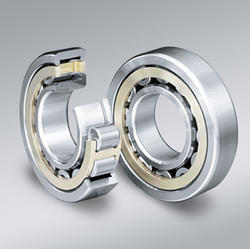


cylindrical roller bearings are available in many designs, series and sizes. The majority are single row bearings with a cage. High-capacity bearings, double row bearings, multi-row bearings, single, double and multi-row full complement bearings (without a cage) and split bearings complete the standard assortment provided here.
Bearings with a cage can accommodate heavy radial loads, rapid accelerations and high speeds. Full complement bearings incorporate a maximum number of rollers and are therefore suitable for very heavy radial loads at moderate speeds. high-capacity cylindrical roller bearings combine the high load carrying capacity of a full complement bearing with the high speed capability of a bearing with a cage.
The factors that influence cylindrical roller bearing performance and service life include but are not limited to the following:
cylindrical roller bearings have two integral flanges on either the inner or outer ring to guide the rollers. The bearings have “open” flanges, i.e. the inward face of the flange is inclined by a defined angle . The flange design, together with the roller end design and surface finish, promote the formation of a lubricant film to reduce friction and frictional heat.
The roller profile determines the stress distribution in the roller/raceway contact area. As a result, the rollers in cylindrical roller bearings have a logarithmic profile to distribute loads evenly along the rollers. This prevents stress peaks at the roller ends to extend bearing service life . The logarithmic profile also reduces sensitivity to misalignment and shaft deflection.
The surface finish on the contact surfaces of the rollers and raceways maximizes the formation of a hydrodynamic lubricant film and optimizes the rolling motion of the rollers. The benefits derived from this, compared with traditional designs, include enhanced operational reliability.
The separable components of same-sized cylindrical roller bearings are interchangeable . Any bearing ring with a roller and cage assembly can be assembled with any removable ring of the same bearing type and size having the same internal clearance class. This is particularly important when bearings and their components must be mounted independently of each other.